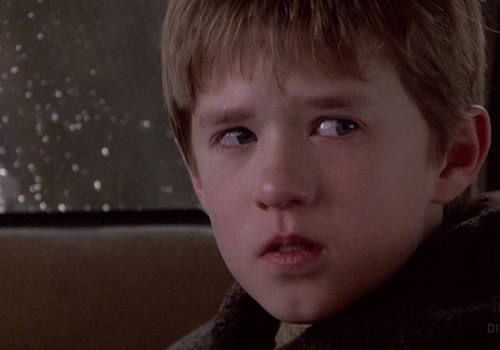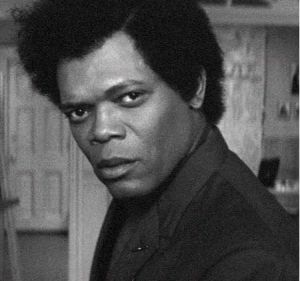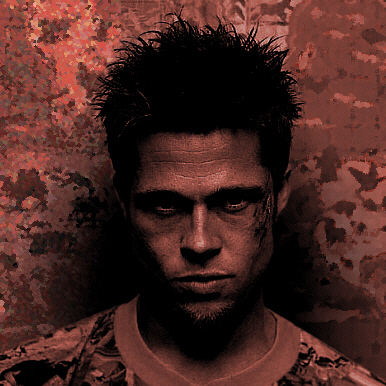Sideways,
Alexander Payne's 2004
wine-country opus, and Academy Award-winner for Best Adapted
Screenplay is treated by many as such a rare bird of cinematic
storytelling. Oh, it is so different! It is so unconventional! Why,
it seems to work with no real plot at all! Critics and naysayers of
the teaching of screencraft then point to Sideways
as proof that one does not need to learn rules and structure to
create a great story. They seem to believe that by some bizarre
happenstance this genetic mutant of storytelling happened to slip by
the gatekeepers to create something different in every way.
What
a load of crap. Sideways is
as traditional as any other Hollywood film. It has the exact same
structure and follows the same rules. It has the plain old normal
three acts with the same plain old major dramatic turning points
doing what they do in every well-written film. The only thing
different about Sideways is
its superficial details.
This
becomes plain to see if one knows the right places to look. (However,
experience has taught me that knowing where to look is an area of
weakness for many critics.) Many people who write about this
film seem unable to grasp what its story is really all about. First
of all, Sideways is a
Healing Narrative (Type #4 of my 16 Types of Story). It
shares this story type with other well-known films such as The
Sixth Sense, Goodwill Hunting, The
Wrestler, and Star Wars: Return of the Jedi.
(I know that last one will raise some eyebrows, so there is a special
section dedicated to it at the end of this article.) Alexander Payne
seems to have a penchant for this story type, since his previous film
About Schmidt was also
a Healing Narrative. In fact, Sideways and
About Schmidt follow almost (but not entirely) the same structure.
In a Healing Narrative:
The protagonist starts the story somehow wounded, and pursues an
objective that will heal him or her, whether that healing be literal,
figurative, or symbolic. Though the hero is met with external
conflict on his or her journey, real moments of development occur
when story events force the hero to overcome his or her resistance to
healing, forcing the hero to get out of his or her comfort zone and
into the unknown.
Sideways'
protagonist Miles starts his story a wounded animal. Miles's divorce
two years earlier left a gash in his spirit so deep that he has yet
to recover. In response, Miles seems to have all but given up
on the pursuit of happiness. The only emotions he seems
to feel anymore are depression, frustration, and irritability.
So,
Miles needs to heal. This will be the focus of the story. But what
specifically occurs in Sideways that
causes this healing to occur? Answering this question will point out
the film's Story Spine. Unfortunately, most who have taken it upon
themselves to analyze this film have misanswered this question and end
up mislabeling rather insignificant events as the story's major
dramatic turning points.
First
of all, we must find the story's inciting incident. The inciting
incident is the event that establishes the Story Problem, sets up the
Story Goal, launches the Main Conflict, and sets the path the rest of
the story will follow. Most people look at Sideways
and declare its inciting incident to be the moment Miles and Jack
leave LA on their trip to the wine country. This is wrong. Leaving
for the wine country does not create any kind of Story Problem. Nor
does it incite any sort of story conflict. How can an event be an
inciting incident when it is something both characters want
to happen? Everything at this point has continued to go according to
plan, making this moment nothing more than another part of the film’s
setup sequence.
To
find the inciting incident, just ask: what is the story really about?
It is about Miles finding a reason to give a damn about his life
again. And how does he do this? By getting over his divorce by
forming a relationship with a new woman – specifically, the Maya
character (Virginia Madsen). And wouldn't you know it? Sixteen
minutes into the film, right at the point when all the screenwriting
books say the inciting incident should occur, this idea is first
introduced. Jack says he is sick of seeing Miles feel sorry for
himself and promises to get Miles laid.
This is the film's inciting incident. It sets up the course of action
through which Miles's healing will occur. It also creates the story's
main conflict. Miles does not want to get laid and resists Jack's
help. Typical to this story type, Miles resists the path to his own
healing. Yet, Jack insists, setting the Story Spine into motion and
getting the real story rolling.
Jack
is a good example of an antagonistic comrade character.
A comrade is a character who assists the protagonist in getting what
he or she needs. However, in stories such as Healing Narratives,
where the protagonist does not wish to pursue the objective he or she
desperately needs, the protagonist needs assistance from the outside.
Antagonistic comrades achieve this by creating a conflict that
indirectly forces the protagonist to take action. The comrade acts
like a foe to be a friend. Keep in mind though that while Jack often
acts in an antagonistic manner towards Miles, he is not the film's
antagonist. Jack does not stand in the way of Miles' goal the way an
antagonist must. In fact, he wants
Miles to reach his goal. The only character in Miles's way is Miles
himself. Miles's refusal to grow and heal makes him his own antagonist
– a trait found quite often in Healing Narratives. Jack's
antagonistic behavior exists to provide a counter-force to Miles'
self-antagonism, constantly pushing Miles forward in spite of his
resistance.
True
to traditional 3-Act form, Sideways
ends its first act with a major dramatic turning point that forces
Miles past a Point of No Return.
True to his word, Jack arranges a date between Miles and Maya. Miles
does not want to go on this date, but agrees because he cannot let
his buddy down. Act 2A is made up entirely by this date. And, just
like any other cinematic story, in Act 2A Miles' character flaws
cause his actions – though well-intentioned – to make the
situation worse. Miles
drinks too much, drunk-dials his ex-wife, and fumbles with every
opportunity to make progress with Maya.
As
usual, Act 2A culminates with the arrival of a Monster Moment at the Mid 2nd-Act
Turning Point. The Monster Moment is a complicating event that
unexpectedly puts the protagonist into a situation far worse
than the one that existed before. Miles, once again acting as his own
worst enemy, blows what seems to be a sure thing with Maya. With this
disappointment in his rearview, Miles now realizes how stupid it was
to resist his own healing. He now wants to heal, but the opportunity
seems to have passed him by. He is angry at himself and just might
spend the rest of his life pathetic and alone.
After
this point, Sideways becomes
less of a cut-and-dry narrative as its multiple threads start to
emerge and develop on their own. Because of this, like the inciting
incident, there is a lot of confusion over what events count as
Sideways' final two
(and most dramatically significant) turning points: the End of 2nd
Act Turning Point and the Main Story Climax. However, both are easy
to identify as long as we remember one thing. The Story Spine is all
about Miles healing through his relationship with Maya. This is what
the story continues to be all about, even though Maya appears only
sporadically for the rest of the film. Since this relationship is the
focus of the Story Spine, the End of 2nd
Act Turning Point and Main Story Climax must directly involve and
build upon the relationship between the two characters.
In Act 2B, as usual in the Healing Narrative, Miles overcomes his
initial resistance and becomes willing to heal. Only Jack's driving
force is no longer available to make things happen. Miles must now
man up and take responsibility for his own happiness. Miles reaches
success, only to have his negative traits screw things up once again.
The
second act ends with a traditional Dark Moment – though the scene
itself is so short and subtle that it usually slips under the
viewers’ radar without them noticing that the storyline has taken a
dramatic turn. The End of 2nd
Act Turning Point is not the moment when Miles has his falling out
with Maya. It is not when Jack gets his face bashed in. It is the
scene afterward when Miles, at his lowest moment, calls Maya from a
pay phone and leaves a voicemail in which he admits he is a
loser. This is an admission of failure on Miles's part. He is
symbolically throwing in the towel, giving up on not only finding any happiness with Maya, but possibly with anyone else in the
future. Just like any run-of-the-mill Hollywood flick, the
protagonist reaches his deepest, darkest point right before the
moment he and Jack must begin their final journey home.
The
third act of Sideways is
nearly a carbon copy of the third act of Payne's previous film About
Schmidt. Both protagonists
accept failure at the end of their second acts and return home in
despair. Their lives then circle the drain as both seem to have given up on life
altogether. Then, the gloom is reversed by a nearly-identical burst
of hope.
Not
long ago, I read an article on Sideways
in which the writer claimed the story's climactic moment occurs in
the extremely short scene where Miles drinks his prized bottle of
wine alone in a burger joint. I don't know what kind of stuff was in
this guy's pipe, but this is absolutely ridiculous. First of all, the
story is not about the bottle of wine. Drinking it does not resolve
any conflict or do anything to complete the Story Spine, so there is
no way that this action could constitute the climax. Furthermore,
what idiot of a screenwriter would put a story's climactic moment in
the middle of a
montage? Not the end of the montage. The middle. If the montage
itself has not yet finished giving all it has to say, how does it
make sense that the story itself finds its end smack-dab in its
middle? Miles's drinking of the wine holds no significance to the plot
other than the symbolic. It communicates that he has given
up on having any more great
moments in life, the kind he has been saving the bottle for. Now, if
this really was the story's climax, how depressing would this ending
be? “Miles needs to heal. Miles fails. Miles gives up. THE END.”
No, dummy. Where the hell is Maya?
The
entire Story Spine has been about Miles's relationship with Maya.
Every major turning point has been about Maya. Therefore, to end the
story with any kind of satisfactory closure, the climactic event must
not only involve Maya, but resolve the entire situation between the
characters. Sideways'
real climax comes in the exact same way as the climax of About
Schmidt -- only instead of a
letter from Ndugu, it is a voicemail from Maya. The protagonist has
given up on life and resigned himself to failure, only to receive
unexpected contact from the person they really care about, reversing his view of the world into one again filled with hope. Maya's
voicemail – and more importantly, the scene that follows –
completes Miles' Story Spine and resolves all story conflict. The
story's Major Dramatic Question has asked “Will Miles ever heal?”
After hearing Maya's voicemail, Miles abandons his last bit of
resistance towards healing and bounds after the one thing he needs to
make himself whole again. The moment he knocks on Maya's door, Miles
is a fully-healed man.
Return of the Jedi
Here's something that will make you
sound smart the next time you're around a bunch of know-it-alls.
Sideways and Return
of the Jedi are the exact same
type of story. Jedi is
also a Healing Narrative.
First of all, it must be noted that
the original Star Wars trilogy follows the same unique structural
form seen in the Lord of the Rings trilogy. In this
structure, the first film is a single, self-contained adventure where
the protagonist is at the head of a group of supporting heroes. Then,
in the second and third installments, plot structure splits into two
dual narratives. In the primary narrative, the protagonist from the
first film continues the quest established in the first film, only
this time he does so (relatively) alone. However, this is only half
the film. The other half is made up of
separate-yet-connected secondary adventure, in which a former
supporting character steps up into a leading role. (The team of Han Solo and Leia becomes
the protagonists of the secondary narratives in Empire and
Jedi. Aragorn takes
this role in The Two Towers,
Gandalf in Return of the King.)
Therefore, to study Jedi
as a Healing Narrative, one must ignore all the stuff with Han Solo
running around Endor with a bunch of teddy bears, because that
material is all part of a secondary narrative which follows its own
line of action.
Jedi's Healing Narrative is
all about Luke Skywalker. Due to the events that ended The
Empire Strikes Back, Luke begins
Jedi a wounded man,
both physically (he lost his hand in battle with Darth Vader), and
emotionally/psychologically (the revelation that Vader is his father
has traumatized Luke and left him in a morass of emotion). Like
Miles, Luke must be made whole again.
At the inciting incident, Luke
receives the challenge through which his healing will be achieved. He
is told by Yoda he cannot complete his Jedi training until he
confronts Darth Vader and overcomes his psychological wound. Luke
then sets a goal. He will not only face his father, but will try to
save Vader’s soul by bringing him back to the virtuous side of the
Force.
It must be noted that Darth Vader is
NOT the antagonist in Jedi.
The Emperor is Luke's antagonist. Luke's goal is to bring his father
back into the light. The Emperor directly opposes this goal through
his desire to do the exact opposite – draw Luke to the Dark Side
with his father. Vader himself remains relatively passive. Jedi
is almost like a hackneyed romantic comedy where Luke is trying to
steal his dream girl away from her jerk fiancee.
However, like Miles in Sideways, Luke Skywalker has internal
flaws that stand in the way of his healing. Luke's wound cannot heal
as long as he remains motivated by hate, anger, or fear – negative
traits the Emperor uses against him. As in Miles’s case, Luke can
either abandon these traits and clear a path to his healing, or he
can succumb to them and let them drag him down into the Dark Side.
In the end, Luke wins, reconciles with his father, and heals the
wound that has been inside him since the film began.

















